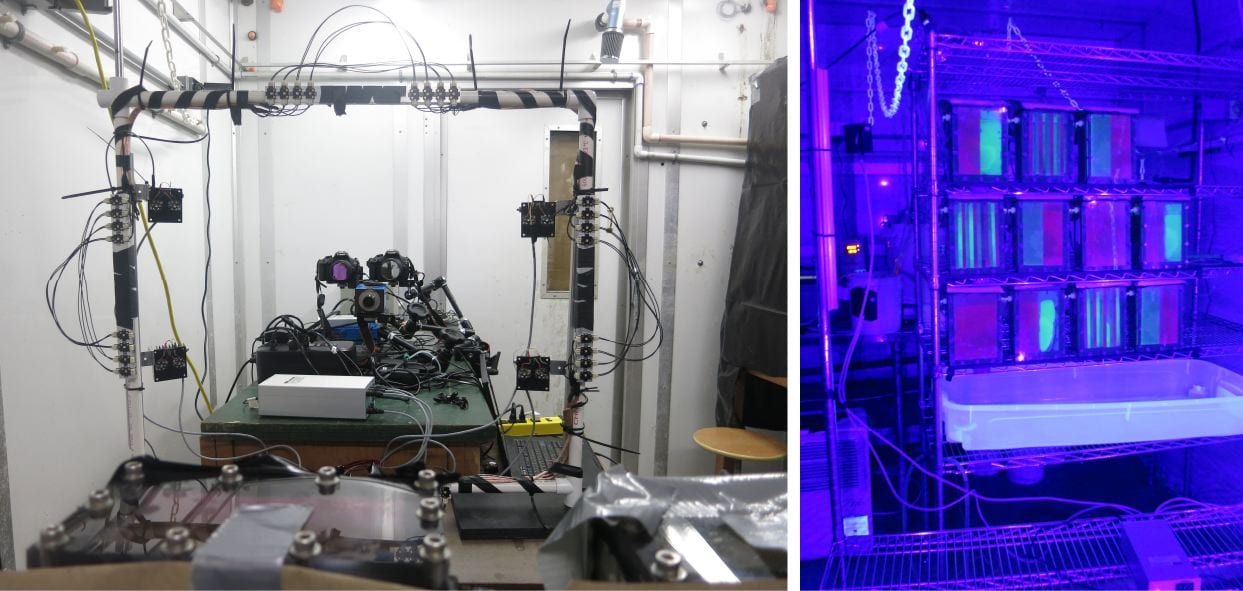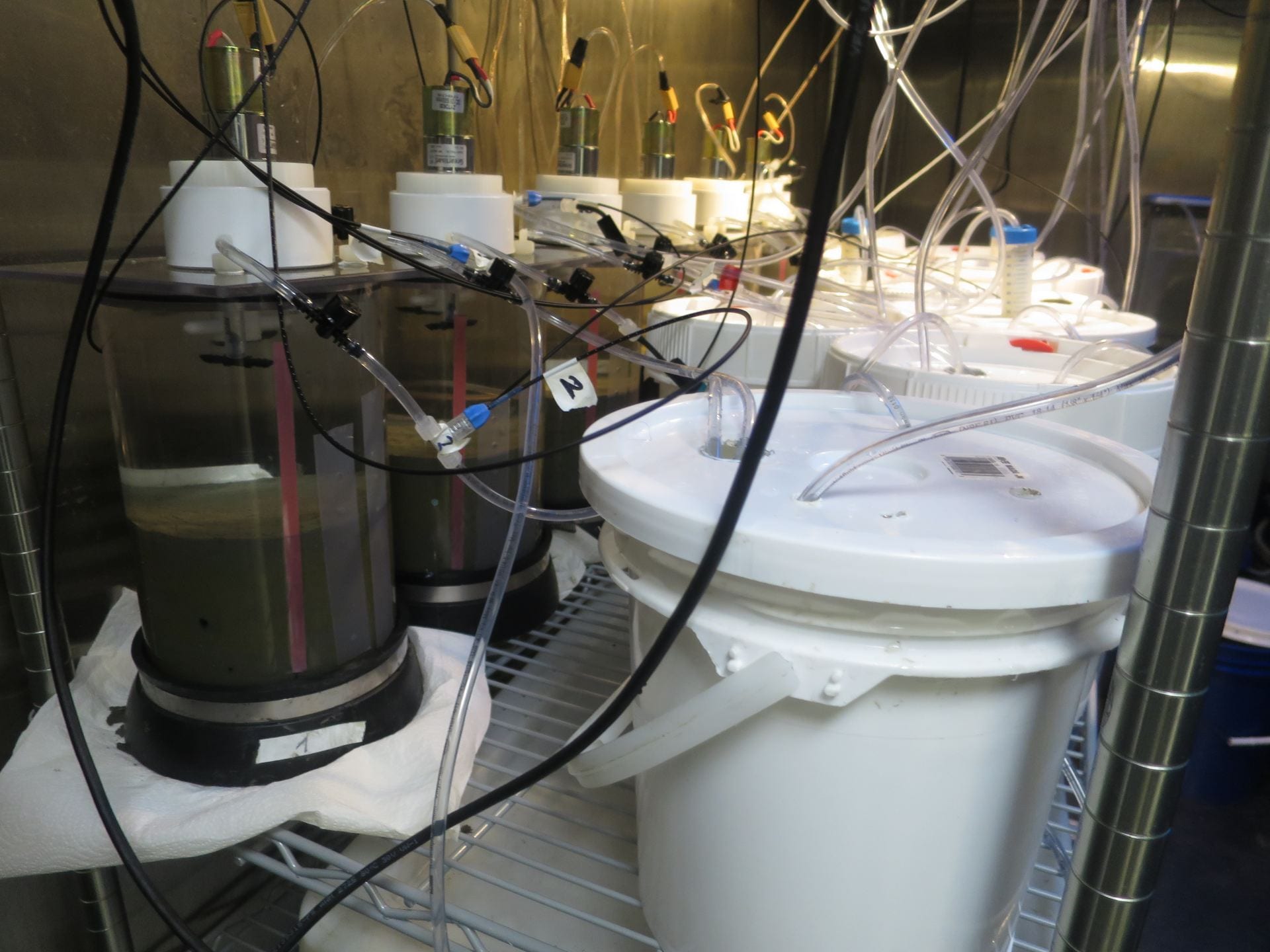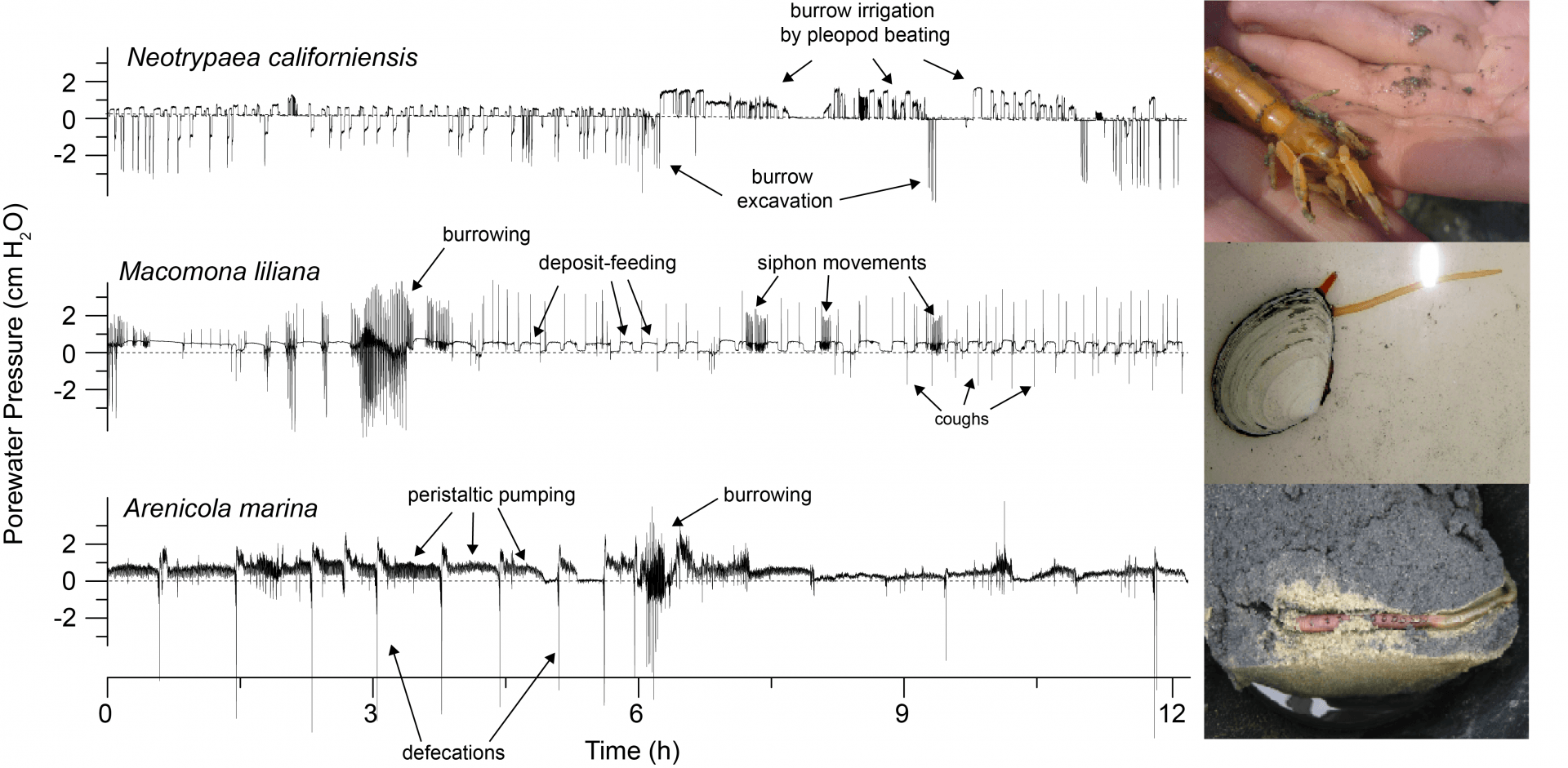Infaunal organisms play a critical role for biogeochemical processes in marine sediments. In my lab we develop and apply novel sensor technologies that allow unprecedented insights into key diagenetic processes in marine sediments, such as organic matter mineralization and authigenic and biogenic mineral formation and dissolution. A concept map developed as a contribution to the Centers for Ocean Sciences Education Excellence (CoSEE) initiative gives an overview over our research on bioturbation. Ongoing research is funded by the US National Science Foundation and through a Minghua Zhang Early Career Faculty Innovation Award.
Planar optode imaging is a chemical imaging technique that allows measurements of water chemistry through transparent aquarium walls. We are currently set up to measure the spatial temporal dynamics of O2, pH, and pCO2, giving us new insights in the geochemical dynamics within bioturbated sediments.


Benthic chambers are used to measure the fluxes of dissolved chemical species across the sediment-water interface.
4-D topography scanner: We have developed a new 3-D scanner that allows us to measure changes in sediment topography with high temporal resolution.
Porewater Pressure sensors not only give valuable information about the activities of infauna – they also allow us to quantify pressure gradients in permeable sediments that induce advective porewater flow. Dissolved chemical species, such as nutrients, are transported orders of magnitude faster than by diffusion.
Time-lapse photography is frequently used in my lab to gather contextual data on animal activities during laboratory experiments. Below is an example of combined time lapse photography and planar optode imaging of oxygen with an antfarm aquarium containing a thalassinid shrimp.
